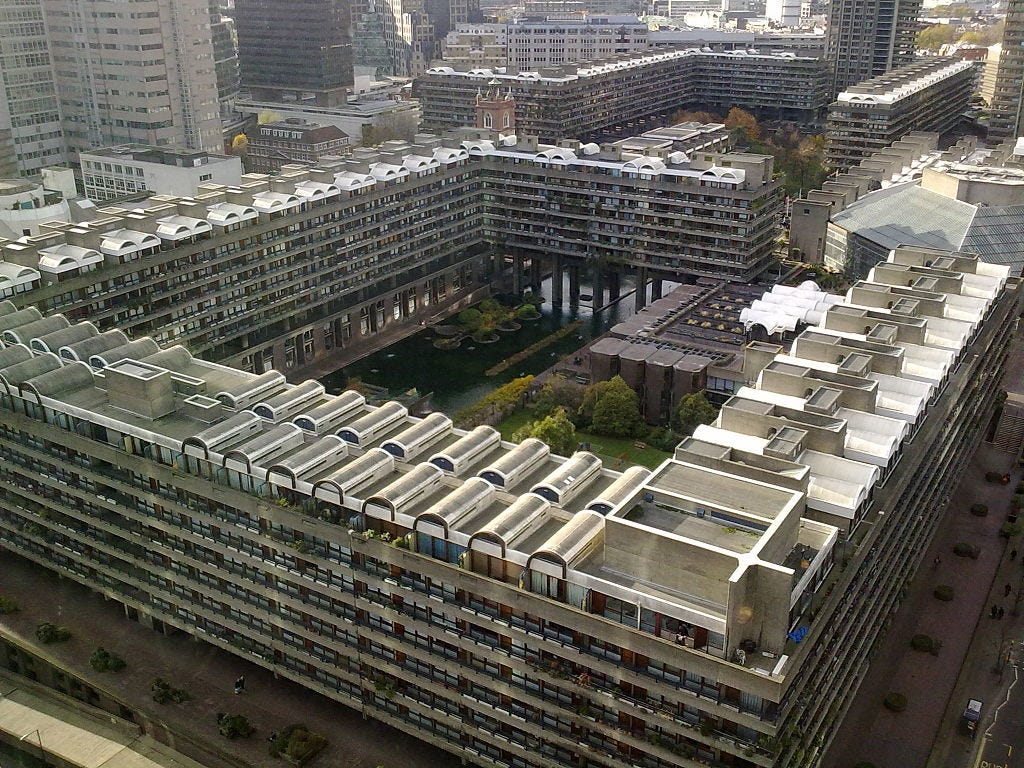Brutalism: Overview
No. Not a new Trump policy.

McLennan Library, McGill University (Montreal)
We took yesterday off, but this week we are looking at Brutalist architecture, also referred to as “new brutalism”. This is not a style for everyone, but it speaks to us deeply. My first real recognition of Brutalism came after becoming familiar with the Barbican Centre in London. Add in years amongst some wonderful examples of the style in Montreal, and my love for brutalism was solidified.

Habitat 67 (Montreal)
The Barbican is a mammoth estate of over 2000 flats that also includes a vibrant arts centre, theatre, bars and restaurants. It’s also seared into my memory as the place I have seen three of the most memorable performances of my life: A unexpectedly stunningly perfect set by The Whyte Horses, a haunting version of Shakespeare’s Titus Andronicus during which several audience members fainted, and most recently, a simultaneously serene yet assaulting performance by the Japanese post-punk masters MONO. Unforgettable.
MONO - God Bless & After You Comes The Flood (Live at The Barbican)
But the appeal of the Barbican is not just what happens inside it, but it is the structure itself. Built in the post-war period as way to entice professionals to return to the bombed-out city, the Barbican complex is characterized by its size, it’s scale, and most of all by its constuction materials: concrete and glas interwoven with green space and water.

Part of the Barbican Complex (London)
Brutalist architecture is most commonly associated with the work of Le Corbusier, who first started working in this style in the 1940s, and the Smithsons, who coined the term. We’ll look at them all this week. What the Barbican was doing in 1965 wasn’t new - but it was pretty close to a perfect expression of the brutalist tradition.

Barbican Centre (London)
But what makes something Brutalist? The style is immediately familiar to anyone who has seen a government building, and it is heavily associated with socialism, totalitarianism, and often public housing. Indeed, Brutalism the architectural style is intertwined with a broader philosophy of what building should be and do: brutalist buildings are to be functional and simple, and they should serve the people who use them. But they are also honest, not just in their function, but in their materials - and there is a reverence of the materials used in construction here. Everything is on display and in its “purest” form - concrete or wood or sand or glass or steel - you experience it as these things are, not as construction material. The concrete is concrete first, a pillar or a wall second.
Many people loathe Brutalist architecture, calling it ugly, a symbol of urban decay, or of failed socialist utopias. They often cannot see past the concrete to the beauty of these jarring structures. For the rest of the week we’ll look closer at some of the architects and buildings associated with new brutalism and try to show you why we this style is so important and appealing.
Tasting Notes
1. Material is celebrated, not hidden. Inner workings, beams, wires, pillars, columns — all are on display.
2. Emphasis on the structure of the building itself.
3. Buildings tend to be exceptionally large, built at imposing scale.
4. Often government buildings, university buildings or large estates.
5. Easy to identify: just ask someone which buildings they want torn down in their city.
